The Earth is a globe and displaying it on a
plane requires complex mathematical transformations known as
projections. Map projections are attempts to portray the surface of
the earth or a portion of the earth on a flat surface. Some
distortions of conformality, distance, direction, scale, and area
always result from this process. Some projections minimize
distortions in some of these properties at the expense of
maximizing errors in others. Some projections are attempts to only
moderately distort all of these properties. Map projections convert
geographic points, represented by a longitude and a latitude, to
Cartesian coordinates in a planar coordinate system.
- Cylindrical projections are precise around the equator
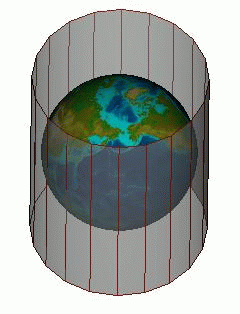
Cylindrical projection
- Conic projections are good for regions other than the equator
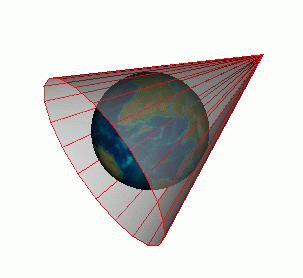
Conic projection
- Azimuthal projections are used for regions around the Poles

Azimuthal projection
You use a particular projection depending on
the area of the globe that interests you. Mercator preserves the
heading and is useful for navigation. Lambert (conic) distorts
distance. Lambert 1 is used for Northern France and Lambert 2 for
Southern France.
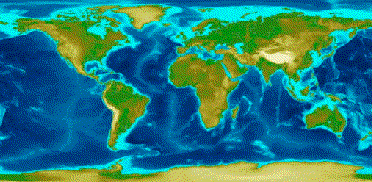
Equidistant cylindrical projection
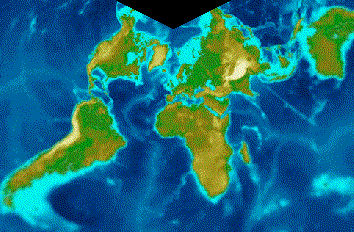
Lambert conformal conic projection
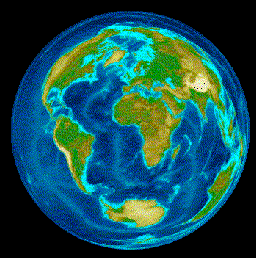
Lambert azimuthal equal area projection
The ideal characteristics for a projection
would be:
- Meridians and parallels crossing at right angles
- Converging meridians
- Equidistant parallels
- The shortest distance between two points is represented by a straight line
- Surface areas are represented by a constant ratio
- Surface contours have an accurate representation
- The whole projection is based on a uniform scale
The perfect projection does not exist, so
you have to choose the best suited to your needs, depending on the
main properties of your application and the geographic areas used
in your application.